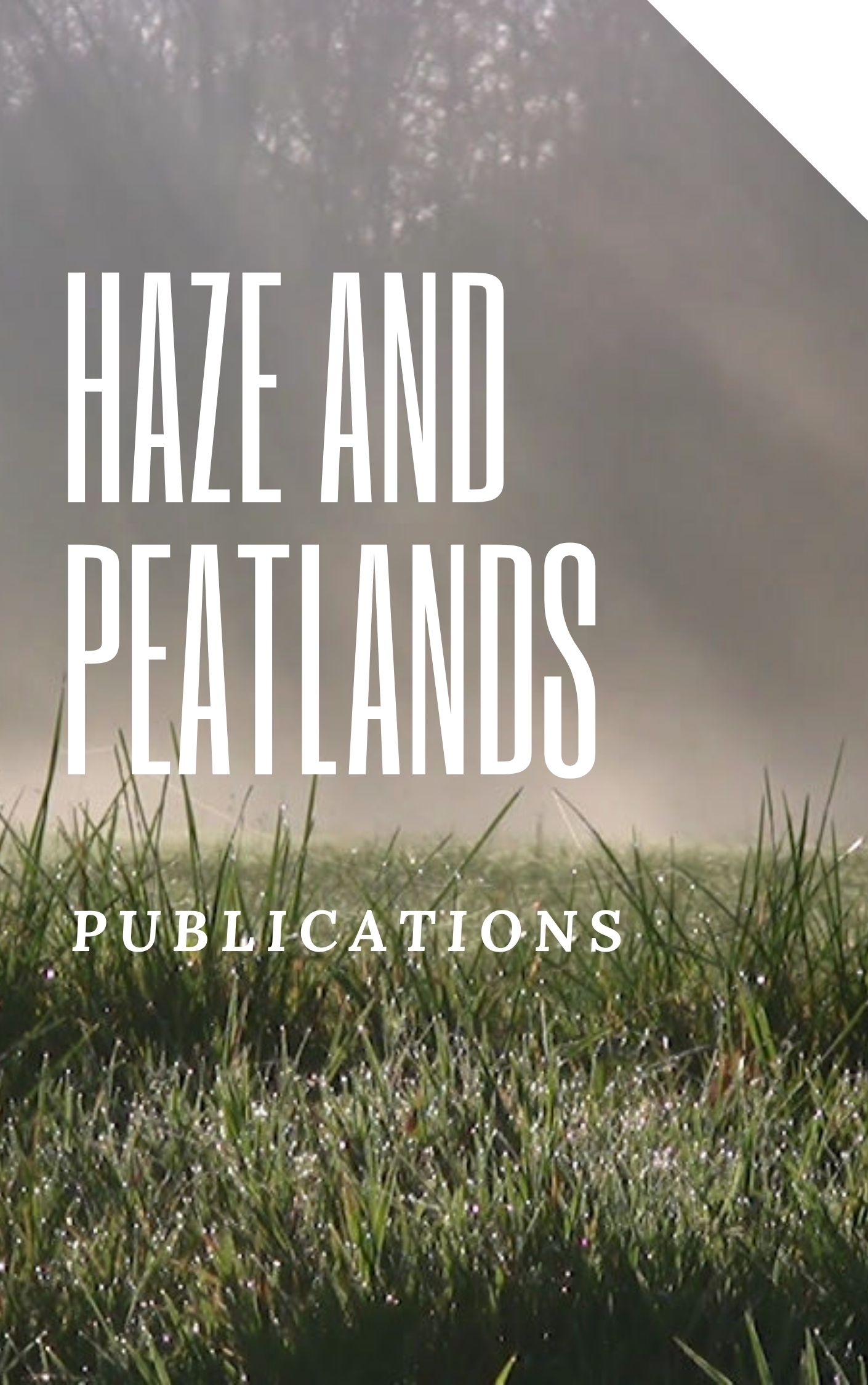Peat fires in Southeast Asia are a major source of trace gases and particles to the regional-global atmosphere that influence atmospheric chemistry, climate, and air quality. During the November 2015 record-high Ocean Ninõ Index (ONI, 2.6) our mobile smoke sampling team made the first, or rare, field measurements of numerous trace gases, aerosol optical properties, and aerosol chemistry and mass emissions for fires burning only peat in the Indonesian province of Central Kalimantan (on the island of Borneo). The measurements used Fourier transform infrared spectroscopy (FTIR), whole air sampling (WAS), photoacoustic extinctiometers (PAX, 401 and 870nm), and detailed off-line analyses of particulate matter (PM) collected on filters. In September-November 2019 we measured peat fire trace gas emissions again, using WAS only, under El Ninõ-Southern Oscillation (ENSO)-neutral conditions (ONI, 0.3) in more remote areas of Central Kalimantan and also the Indonesian provinces of Riau, Jambi, and South Sumatra, all on the island of Sumatra. The 2019 measurements significantly expanded the geographic range and climate conditions sampled. This paper presents the 2019 results and synthesizes them with the previous fieldwork to converge on more robust regional average emission factors (EFs; grams of compound per kilogram of biomass burned) for authentic peat fires. In addition, samples of peat imported from Indonesia were burned in US laboratories, and the EFs and optical properties were characterized in more detail than in the field by a larger suite of instrumentation. We use the improved knowledge of regional emissions based on the expanded field measurements to select the most representative lab data and compute a synthesized, more "chemically complete"set of EFs and aerosol optical properties for tropical peat fires. The modified combustion efficiency (MCE) values for the peat smoke sampled in 2019 were within the range of MCEs sampled in 2015, but with a lower average in 2019 (0.718±0.021, range 0.687-0.736) than 2015 (0.772±0.035, range 0.693-0.835). Averaging the new and older data together suggests an updated MCE for tropical peat fires of ∼0.76. Despite the difference in MCE, the study-average methane emission factors (EF CH4) were remarkably similar across the 2 years probing different regions: 9.42±2.51gkg-1 in 2019 and 9.51±4.74gkg-1 in 2015. When parsing the 2019 samples by province, the EFs for non-methane organic gases (NMOGs) were about 3 times higher in South Sumatra and Central Kalimantan than in Jambi and Riau, but the overall 2019 study average was only ∼15% higher than the 2015 study average. South Sumatra peat fires emitted higher amounts of carbonyl and dimethyl sulfide, suggesting a volcanic or marine influence or effects of agricultural chemicals. The lab and fieldwork taken together provide EFs for 230 trace gases including CO2 (1544gkg-1), CO (315gkg-1), and CH4 (9.8gkg-1). These are significant adjustments to IPCC-recommended EFs,-9%, +50%, and-53%, respectively. We also report EFs for numerous NMOGs, 46N-containing compounds, and 14 sulfur-or halogen-containing species. The use of high-resolution mass spectrometry in the lab allowed measurement of 82% more NMOG mass than in the field. Gravimetrically measured EF PM2.5 in the field in 2015 (17.3±5.8gkg-1) was ∼20% lower than the average from lab studies (22.4±10.4gkg-1), perhaps due to higher field temperatures. Taken together the lab and field data show that the single-scattering albedo (SSA) was largely independent of wavelength and MCE in the visible (∼0.998), but lower at low MCE at 401 and 405nm with a value of 0.958 at the study-average MCE. The absorption Ångström exponent (AAE) at the average MCE was 5.7. By far the largest PM component was weakly absorbing insoluble organic carbon.
View source

